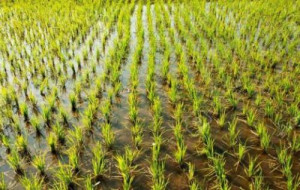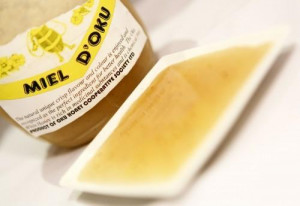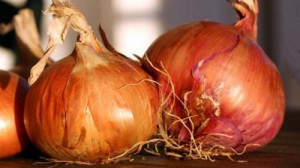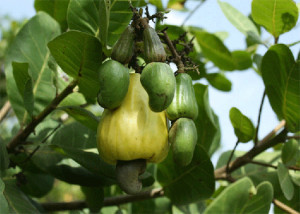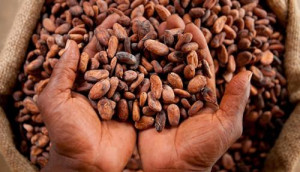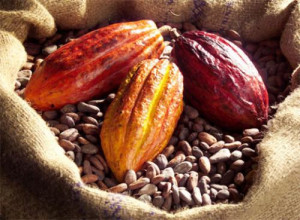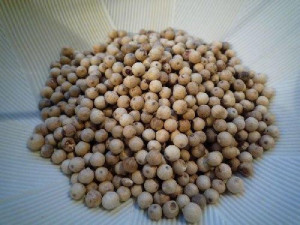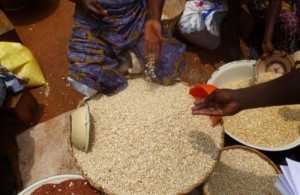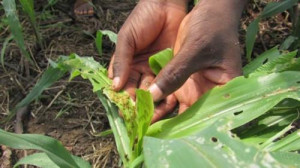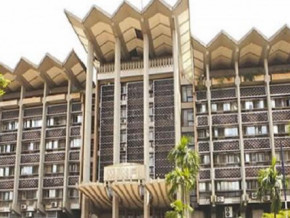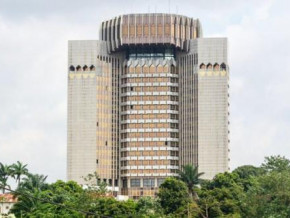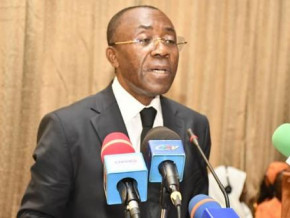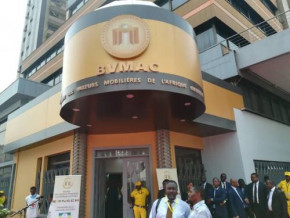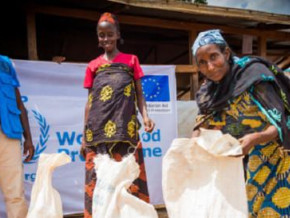
Cameroon : 800 hectares arranged for rice growing within 8 years thanks to a government programme
Within 8 years, 800 hectares of fields to be used for rice growing were arranged in Cameroon thanks to the support programme for agriculture development (Projet d’appui au développement des filières agricoles -Padfa). This was revealed during a review of this CFA11.7 billion programme (of which the International Fund for Agricultural Development contributed 15%).
During the 8 years of its implementation, this programme helped support 1,276 groups (constituted of 25,140 rice and onion producers) by providing high yield seeds. Those rice growers now produce up to 6 tons per hectare in the low-lying lands.
Despite this increase in production, the country still imports rice. Indeed, the local production is estimated at 100,000 tons while the demand is above 300,000 tons annually.
BRM
Cameroon: Production of Oku Honey dropped by 65% this year because of early rainy season
In 2018, the production of Oku honey (labeled in the framework of OAPI’s geographic indication program) has dropped by 65%. This was revealed by the Cameroon Gender and Environment Watch, an NGO based in Oku in the Northwest.
According to the organization, this drastic drop was due to the early rainy season this year. Indeed, the season started when trees started to bloom. Because of this, the blossomings stopped and bees had no flowers to glean.
Let’s note that Oku honey, whose adoption of labeling in 2013 contributed to the substantial increase of the producers’ revenues, is harvested between April and the first week of June.
BRM
Cameroon: Padfa provides improved onion seeds that significantly increase production
For some years now, Cameroonian onion producers’ average production per hectare increased from 11 to 27 tons, the ministry of agriculture reveals.
According to the ministry, this feat was notably due to the implementation of the agriculture support program Projet d’appui au développement des filières agricoles (Padfa) whose results were recently reviewed in the capital. It has been implemented for 8 years now with the financial support of Fonds international de développement agricole (Fida).
Apart from the production of improved rice and onion seed and its technical assistance to producers, the Padfa (whose budget is CFA11.7 billion of which Fida provided 15%) also helped build warehouses in the country’s production basins.
BRM
Cameroon aspires to be the world’s leading cashew producer by developing 100,000 hectares of the fruit
In the coming days, the Agricultural Research and Development Institute (Irad) will launch the free distribution of 50,000 cashew trees in the three northern regions of Cameroon, official sources reveal.
These 50,000 plants are part of the 500,000 being produced in the different centers of IRAD, the research center whose aim is to grow 10 million of these trees (to be distributed to Cameroonian cashew growers for free) by 2021. The aim of this operation is to create 100,000 hectares of cashew fields in the country.
To implement this project, which aims at making Cameroon the leading cashew producer in the world in the coming years, Cameroon’s president issued a prescription for CFA1.5 billion to be provided for the production, IRAD reveals.
Through this project, the government is thus paving the way for the development of a second cash crop in the three northern regions (North, Far-north, and Adamaoua) whose climate is appropriate for cashew (suitable for dry seasons) but are only producing cotton.
Let’s note that Cameroon started producing cashew in 1975, about the same time as Côte d’Ivoire. Nowadays, however, it only produces about 33 tons yearly (thanks namely to Gic Ribaou, a group of passionate people who, for years now, have been trying to keep the production alive in the North) while Côte d’Ivoire is the world leading producer.
Indeed, according to official sources, in the framework of a reforestation campaign in Sanguéré, not so far from Garoua, the first cashew trees were planted in Cameroon in 1975. According to sources close to the case, the aim was to increase the cashew fields to 10,000 hectares and set a cashew juice production plant as well as sell the cashew nut (since the cashew has two components: the fruit and a nut on its head).
43 years later, only 650 hectares of cashew fields were effectively developed, including 60 hectares in 2017 thanks to an operation conducted by the ANAFOR (the national agency for support in forestry), explained Marie Hortense Onana, head of the ANAFOR in the North. In the coming years, this agency aims to develop hundreds of hectares of cashew fields in the Sanguéré orchard where Gic Ribaou has also developed a little more than 100 hectares of new plants since 2002.
Therefore, this programme initiated by IRAD is an adequate opportunity for all those actors and the various individuals and institutions such as SODECOTON interested in planting cashew (because, according to various accounts, the unavailability of the plant was one of the roadblocks to the development of Cashew in Cameroon, apart from the ignorance of the various economic opportunities cashew represents).
Brice R. Mbodiam
Cameroon to pay about CFA1 billion cocoa premium to quality cocoa producers this year
Cameroon will provide CFA1 billion premium to cocoa producers who would supply better quality cocoa during the 2017-2018 season. This was revealed during the 2017-2018 campaign’s review meeting organized last week in Ntui.
According to our sources, this premium was constituted by levying CFA5 from the export tax which should be paid to the Fonds de développement des filières cacao-café (FODECC).
In the coming weeks, a committee of government’s representatives, supporting structures, and the professionals will meet to establish the list of the beneficiaries (thanks to the sales notes delivered after each purchasing operation and on which the quality of each cocoa sold is mentioned) and determine how the fund will be distributed to them.
This premium is part of the government’s measure to encourage local cocoa producers to produce better quality cocoa. Let’s remind that some exporters have already initiated various measures to improve cocoa’s quality in the country by encouraging the production of certified cocoa.
For instance, Telcar Cocoa, the local representative of Cargill trained thousands of producers and during the last five cocoa campaigns, they were provided CFA3.7 billion cocoa premium.
Let’s remind that during the last three cocoa campaigns, more than 90% of the cocoa beans exported by Cameroon were grade II products. Due to this fact, its price is discounted by up to CFA200 per kilogram on the international market despite the various measures initiated by the cocoa council and the government.
Brice R. Mbodiam
Cameroon : this season, cocoa production could be higher than that of the last season, CCC reveals
By May 2018, the total cocoa exported by Cameroonian producers during the current campaign was estimated at about 220,000 tons. This was revealed by authorized sources during the review of the 2017-2018 cocoa campaign organized by the Cofee-cocoa council.
At this rate, by July 2018, when the campaign should end, the volume produced could be higher (or equal in the worst cases) than the 231,642 tons produced during the last season. According to our sources, this estimate is far below the real production in view of the security challenges in the Southwest which is one of the largest production basin.
Indeed, many producers abandoned their farms, fleeing combats between the armed forces and the secessionists. According to these sources, due to these security reasons, the fraudulent exports with neighboring Nigeria have increased.
They further reveal that they do not expect the cocoa quality to improve significantly this season despite the numerous measures taken by government and exporters in that regard. As for the price, it is below CFA1,000 per kilogram; far below the CFA1,500 it used to be.
Brice R. Mbodiam
Cameroon publishes a research to improve the quality of Penja pepper
A research to improve the quality of Penja pepper has just been published in Douala. The study conducted by the chamber of commerce and the Canadian expert Bertrand Yvon delineated the growing regions in order to keep the pepper’s organoleptic profile.
This delineation took into account the soil characteristics, the altitude, temperature, moisture and the precipitation level.
The research also indicates some good practices to be respected by producers to ensure that the pepper produced complies with the European Union’s standards.
Let’s remind that since 2013, Penja pepper was labeled in the framework of a programme funded by the French Agency for Development. Cameroonian producers are producing it in great quantity, moreso when the pepper’s price rose from CFA2,500 to CFA14,000 per kilogram. This is a real opportunity for producers whose 300 tons produced in 2015 was mainly exported.
BRM
Cereal prices increased by 38% within March-May 2018 in the Far-North
During March-May 2018, the price of cereals increased by 38% in the Far-North. This was revealed in a press statement by Henri Eyébé Ayissi on May 29, 2018, in Yaoundé.
This increase is alarming, to say the least as cereals are the staple foods in the region.
In addition, with the influx of refugees and the drop in the production, the threat of starvation is rising and should move further in the coming three months in Diamaré (Far-North), Mayo Rey ( at the border with Chad and Central Africa) and Bénoué ( North).
Brice R. Mbodiam
CDC orders machines to diversify its production
On May 22, 2018, during an official ceremony in Yaoundé, Cameroon Development Corporation (CDC) signed a convention worth CFA39 billion to acquire heavy equipment.
According to Benjamin Itoe, president of the company’s board, not only will these machines help increase the production of banana and rubber but, they will also help diversify production by introducing cassava, corn, and pepper. “We have lands for this purpose but we need equipment”, he said.
This confirms the implementation of a project which was elaborated since 2016 when the price of the traditional products the company used to produce fell on the international market leading to financial difficulties.
Indeed, at the end of the meeting of the administrative board held from August 9 to 10, 2016, the members allowed the general management to diversify CDC’s production.
The board even suggested corn, cassava, and pepper which are profitable and whose production cycle is short.
Let’s note that this decision of the administrative board was issued seven months after the company, now fully owned by Cameroon, was reorganized via a presidential decree published on January 20, 2016. This decree further extended the company’s corporate purpose to include agro-pastoral activities thus opening the door to diversification which seems to be the way to salvation of this agroindustry, whose banana exports decreased by 50% during Q1, 2018.
Brice R. Mbodiam
Fall Armyworm : a threat for Cameroon’s cereal production
This year, the fall armyworm has destroyed about 75% of Cameroon’s cereal production. This is revealed by Louisette Clémence Bamzok in charge of agriculture development at the ministry of agriculture and rural development.
To stop the worm’s attacks, Cameroon has launched a support program this month, May 2018 with the financial support of Food and Agriculture Organization which disbursed CFA120 million.
The program which will be implemented for 18 months will help circumcise the ravages caused by the fall armyworm. In that regard, two pesticides were certified by the government in March 2018.
Though the worm has already destroyed fields in 7 out of the country’s 10 regions, the destructions were more prevalent in the North where 36,700 hectares were destroyed in 2017, official sources revealed.
The ravages will mostly affect people in the Northern regions (North, Far-North, and Adamaoua where about one-third of the country’s population live) since cereals (corn, sorghum, and millet) are the staple foods in those regions. It is however important to note that in recent years, the population in that region has increased due to refugees arrival (refugees who are fed by the World Food Program).
In addition, the drop in cereal production will also affect the poultry sector (Corn being the main element for feed grains) which has already been hit by the avian flu outbreak in 2016 and in 2017.
Brice R. Mbodiam
Mags frontpage
- Most read 7 days
- shared 1 month
- read 1 month


